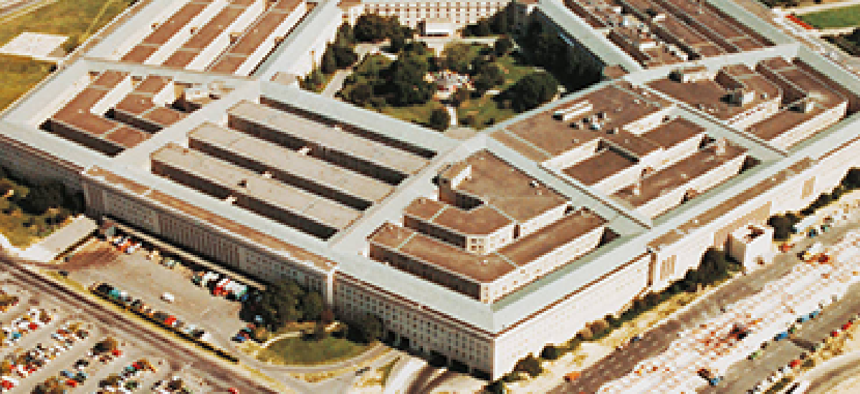Military fears dark times ahead

As the confluence of circumstances that comprise the 'fiscal cliff' come closer to reality, the Joint Chiefs of Staff warn of creating a 'hollow force' and urge Congress to act before it's too late.

The Army, Air Force and Navy all have issued memos to their subordinate organizations outlining what programs and activities are first on the chopping block. The guidelines largely echo Defense Department recommendations, issued Jan. 10, including freezes on hiring and IT purchases as well as orders to review contracts for potential efficiencies and savings.
The common theme is to prepare for the worst, but that is not stopping DOD’s highest-level officials from imploring Congress to act to prevent the budget uncertainty that could arise from the confluence of sequestration, the continued funding of government through continuing resolutions rather than a full budget, and an impending debt ceiling debate.
“We are on the brink of creating a hollow force due to an unprecedented convergence of budget conditions and legislation ... We ask for legislative action that adequately resources readiness while granting the department the authority and flexibility to shape the force to new budget realities,” reads a so-called “28-star” letter signed by all seven members of the Joint Chiefs of Staff – all four-star generals.
The letter went on to warn of some the worrisome impacts of the impending spending cuts.
“Should this looming readiness crisis be left unaddressed, we will have to ground aircraft, return ships to port and stop driving combat vehicles in training. Training will be reduced by almost half of what we were planning just three months ago,” the generals wrote.
The services’ memos outline some of those measures explicitly. The Air Force’s guidance, dated Jan. 14, includes the curtailment of all non-readiness flying, and a Jan. 11 AP report said flying would be reduced more than 200,000 hours, or just under 20 percent. The Navy memo, also dated Jan. 14, additionally includes reductions to flying hours and ship steaming days. The Army, while it makes no specific mention of combat vehicles in its Jan. 16 document, is directing commanders to “reduce utilities consumption to the maximum extent possible.”
All of the service memos include explicit references to cutting training, although to varying degrees. Most comprehensive is the Army’s orders to curtail training, including training events, “not related to maintaining readiness for Operation Enduring Freedom, the Korean forward-deployed units, homeland defense and the Division Ready Brigade.”
“Risk shall be taken in all areas of training that are not related to these protected missions. To the extent that an action reducing unit readiness is irreversible, it must be delayed until detailed planning is complete and further guidance is provided,” the Army memo stated.
The services also are clamping down on conferences, as evidenced by orders in all of the memos to curtail or at least limit conference hosting and attendance – and by the Navy’s Jan. 15 announcement that it had cancelled its annual Department of the Navy IT West Coast conference, held in San Diego.
The “28 star” letter additionally references the potential furlough of roughly 800,000 civilian DOD employees, although the individual services are deferring furlough decisions to broader department-wide directives that could come down the road. Army Secretary John McHugh, in the guidance memo, called the furloughs “a tool of last resort.”
On Jan. 16, at least some reaction to the Joint Chiefs’ letter was offered from the Hill.
“The condition of our Armed Forces is swiftly declining. And this is the first red flag on what could be a hazardous road for our national security,” Rep. Buck McKeon, chairman of the House Armed Services Committee, said in a released statement.
But McKeon questioned whether it was too little, too late, and pointed the finger at the Pentagon for its last-minute planning.
“I only wish the service chiefs’ warning had come sooner. For well over a year we have seen this perfect storm brewing. Time after time, this committee was told by Pentagon officials that there was no need to plan for sequestration's dire consequences,” McKeon said. “Time after time, we gave those officials the opportunity to testify about the risks inherent in that strategy. Now, as we approach the midnight hour, DOD is just beginning to offer specifics.”
In comments made Jan. 17 while traveling in Italy, Defense Secretary Leon Panetta fired back, putting the heat on Congress – as he frequently has in references to sequestration.
“Frankly ... the greatest threat we face right now is continuing uncertainty in Washington as to just exactly what will happen on the budget,” Panetta said. “We don't know, frankly, what we're going to have for [fiscal 2013] because the Congress hasn't made those decisions ... my hope is that Congress will ultimately come together and make the right decisions for the sake of national defense, for the sake of our country, for your sake, make the right decisions that have to be made in order to govern the country. That's the responsibility we expect of people when we elect them, is to govern the country.”





